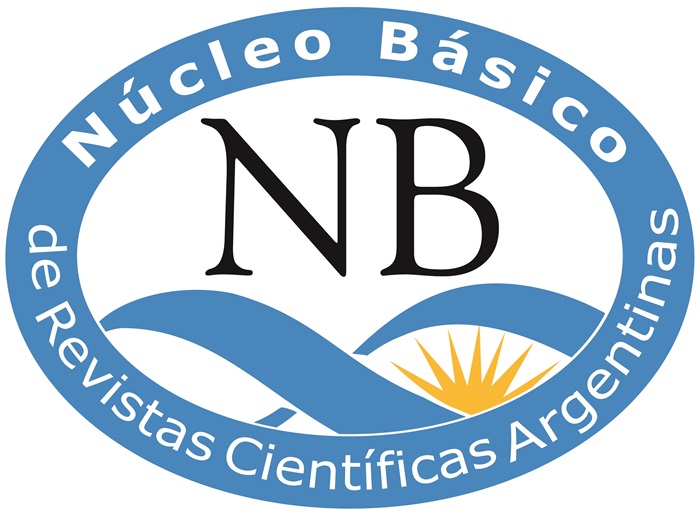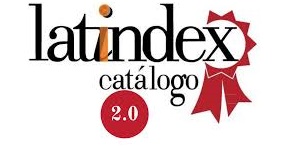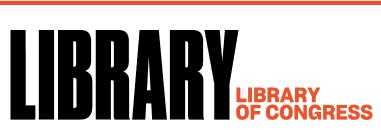Ajmal, M. M., Shamim, M., & Saleh, M. (2016). Journal of Behavioural Sciences, Vol. 26, No. 2, 2016, 26 (2).
Angres, D. H., & Bettinardi-Angres, K. (2008). The Disease of Addiction: Origins, Treatment, and Recovery. Disease-a-Month, 54(10), 696–721. https://doi.org/10.1016/j.disamonth.2008.07.002
Ávila, A. S. (2007). Trabajo infantil e inasistencia escolar. Revista Brasileira de Educação, 12(34), 68–80. https://doi.org/10.1590/S1413-24782007000100006
Baumeister, R. F., Campbell, J. D., Krueger, J. I., & Vohs, K. D. (2003). Does high self -esteem cause better performance, interpersonal success, happines or healthier lifestyle? Psychological Science in the Public Interest, 4(1), 1–44.
Ben-David, V., & Jonson-Reid, M. (2017). Resilience among adult survivors of childhood neglect: A missing piece in the resilience literature. Children and Youth Services Review, 78(December 2016), 93–103. https://doi.org/10.1016/j.childyouth.2017.05.014
Berntsen, D., & Rubin, D. C. (2006). The centrality of event scale: A measure of integrating a trauma into one’s identity and its relation to post-traumatic stress disorder symptoms. Behaviour Research and Therapy, 44(2), 219–231. https://doi.org/10.1016/j.brat.2005.01.009
Berntsen, D., & Rubin, D. C. (2007). When a Trauma Becomes a Key to Identity : Enhanced Integration of Trauma Memories Predicts Posttraumatic Stress Disorder Symptoms. Applied Cognitive Psychology, 21, 417–431. https://doi.org/10.1002/acp
Berntsen, D., Willert, M., & Rubin, D. C. (2003). Splintered memories or vivid landmarks? Qualities and organization of traumatic memories with and without PTSD. Applied Cognitive Psychology, 17(6), 675–693. https://doi.org/10.1002/acp.894
Boh, D., Mun, F. R., Londo, C., & Vinaccia, S. (2016). El sistema inmunológico en personas con trastorno de estrés postraumático: una revisión, 26(57), 245–252.
Brignotti. (2008). Elevamiento epidemiologico en la poblacion escolari - zada de la ciudad autonoma de buenos aires. Ciencias Psicológicas, 2(2), 131–141.
Camargo-Ramos, C., Pinzon-Villate, G. (2012). La promoción de la salud en la primera infancia: evolución del concepto y su aplicación en el contexto internacional y nacional. Rev Fac Med.Suplemento, 60(11), 62–74.
Caminos, M., & Amichetti Quentrequeo, A. (2015). Eteronormatividad, autoestima y bullying homofóbico en Argentina. Psocial, 1(2), 17–32.
Catalina-Vicol, M., Stinga, O. C., Caba, L., Ioan, B., & Astarastoae, V. (2008). Drug Adiction - it is just a Medical Probelem? Revista Romana De Bioetica, 6 (4), 98–110.
Coholic, D. (2005). The Helpfulness of Spiritually Influenced Group Work in Developing Self-Awareness and Self-Esteem: A Preliminary Investigation. The Scientific World JOURNAL, 5, 789–802. https://doi.org/10.1100/tsw.2005.99
Colángelo, M. A. (2003). La mirada antropológica sobre la infancia. Reflexiones y perspectivas de abordaje. Infancias Y Juventudes. Pedagogia Y Formacion, 1–8. Retrieved from http://www.me.gov.ar/curriform/publica/oei.../ponencia_colangelo.pdf
Costa, P. T., & McCrae, R. R. (2005). A Five-Factor Theory Perspective on the Rorschach. Rorschachiana, 27(1), 80–100. https://doi.org/10.1027/1192-5604.27.1.80
Costa, P. T., & McCrae, R. R. (2012). The Five-Factor Model, Five-Factor Theory, and Interpersonal Psychology. In L. M. Horowitz & S. Strack (Eds.), Handbook of Interpersonal Psychology: Theory, Research, Assessment, and Therapeutic Interventions (pp. 91–105). New Jersey: John Wiley & Sons. https://doi.org/10.1002/9781118001868.ch6
Costa, P. T., Patriciu, N. S., & McCrae, R. R. (2005). Lessons from Longitudinal Studies for New Approaches to the DSM-V: The FFM and FFT. Journal of Personality Disorders, 19(5), 533–539. https://doi.org/10.1521/pedi.2005.19.5.533
Crespo, M., & Gomez, M. M. (2012). La Evaluación del Estrés Postraumático: Presentación de la Escala de Evaluación Global de Estrés Postraumático (EGEP). Clínica Y Salud, 23(1), 25–41. https://doi.org/10.5093/cl2012a4
Dalgleish, T. (2004). Cognitive Approaches to Posttraumatic Stress Disorder: The Evolution of Multirepresentational Theorizing. Psychological Bulletin, 130(2), 228–260. https://doi.org/10.1037/0033-2909.130.2.228
Dalgleish, T., Rolfe, J., Golden, A.-M., Dunn, B. D., & Barnard, P. J. (2008). Reduced autobiographical memory specificity and posttraumatic stress: Exploring the contributions of impaired executive control and affect regulation. Journal of Abnormal Psychology, 117(1), 236–241. https://doi.org/10.1037/0021-843X.117.1.236
DiLillo, D., Hayes-Skelton, S. A., Fortier, M. A., Perry, A. R., Evans, S. E., Messman Moore, T. L., … Fauchier, A. (2010). Development and initial psychometric properties of the Computer Assisted Maltreatment Inventory (CAMI): A comprehensive self-report measure of child maltreatment history. Child Abuse and Neglect, 34(5), 305–317. https://doi.org/10.1016/j.chiabu.2009.09.015
Donnelly, J., Young, M., Pearson, R., Penhollow, T. M., & Hernandez, A. (2008). Area Specific Self-Esteem, Values, and Adolescent Substance Use. Journal of Drug Education, 38(4), 389–403. https://doi.org/10.2190/DE.38.4.f
Echeburúa, E., Amor, P. J., Muñoz, J. M., Sarasua, B., & Zubizarreta, I. (2017). Escala de Gravedad de Síntomas del Trastorno de Estrés Postraumático según el DSM-5: versión forense (EGS-F). Anuario de Psicologia Juridica, 27(1), 67–77. https://doi.org/10.1016/j.apj.2017.02.005
Echeburúa, E., de Corral, P., Amor, P. J., Zubizarreta, I., & Sarasua, B. (1997). Escala de gravedad de síntomas del trastorno de estrés postraumático: propiedades psicométricas. Análisis Y Modificación de Conducta. Retrieved from http://zutitu.com/FitxersWeb/20/ARTICULO10.pdf
Edwards, V. J., Holden, G. W., Felitti, V. J., & Anda, R. F. (2003). Relationship between multiple forms of childhood maltreatment and adult mental health in community respondents: Results from the adverse childhood experiences study. American Journal of Psychiatry, 160(8), 1453–1460. https://doi.org/10.1176/appi.ajp.160.8.1453
Facchini, D. M. (2006). La preocupación por el peso y la figura corporal en las niñas y adolescentes actuales : ¿de dónde proviene ?, 104(4), 345–350.
Farris, J., Burke Lefever, J. E., Borkowski, J. G., & Whitman, T. L. (2013). Two Are Better Than One: The Joint Influence of Maternal Preparedness for Parenting and Children’s Self-Esteem on Academic Achievement and Adjustment. Early Education and Development, 24(3), 346–365. https://doi.org/10.1080/10409289.2012.658551
Gaitán, L. (2006). La nueva sociología de la infancia. Aportaciones de una mirada distinta. Política Y Sociedad, 43(1), 9–26. https://doi.org/-
Gerosa, F. (2016). PERSONALIDAD, AUTOESTIMA Y DESEMPEÑO ACADÉMICO. UNA APROXIMACIÓN COMPLEMENTARIA A PARTIR DE LA TEORÍA DE LOS CINCO FACTORES DE LA PERSONALIDAD. Psocial, 2, 46–53.
Gimenez, P.;Correché, S.& Rivarola, M. . (2013). Autoestima e Imagen Corporal . Estrategias de intervención psicológica para mejorar el bienestar psicológico en pre- adolescentes en una escuela de la ciudad de San Luis , Argentina.
Greger, H. K., Myhre, A. K., Klöckner, C. A., & Jozefiak, T. (2017). Childhood maltreatment, psychopathology and well-being: The mediator role of global self-esteem, attachment difficulties and substance use. Child Abuse and Neglect, 70(February), 122–133. https://doi.org/10.1016/j.chiabu.2017.06.012
John, D., Trauma, R. J. M., & Link, C. (2017). Trauma Centrality and PTSD Symptom Severity in Adult Survivors of Childhood Sexual Abuse The Harvard community has made this article openly available. Please share how this access benefits you . Your story matters . Citation Accessed. https://doi.org/10.1002/jts.20656
Kleim, B., Wallott, F., & Ehlers, A. (2008). Are Trauma Memories Disjointed from other Autobiographical Memories in Posttraumatic Stress Disorder? An Experimental Investigation. Behavioural and Cognitive Psychotherapy, 36(2), 221–34. https://doi.org/10.1017/S1352465807004080
Kounenou, K. (2010). Exploration of the relationship among drug use & alcohol drinking, entertainment activities and self-esteem in Greek University students. Procedia - Social and Behavioral Sciences, 2(2), 1906–1910. https://doi.org/10.1016/j.sbspro.2010.03.1007
Leary, M. R., & Baumeister, R. F. (2000). The nature and function of self-esteem: Sociometer theory, 32, 1–62. https://doi.org/10.1016/S0065-2601(00)80003-9
Lobbestael, J. (2009). Thombs BD, Bernstein DP, Lobbestael J , Arntz A . A validation study of the Dutch Childhood Trauma Questionnaire-Short ..., (August). https://doi.org/10.1016/j.chiabu.2009.03.001
Matrángolo, G. (2016). Maltrato Infantil: Herramientas para su Enaluación Retrospectiva. Una revisión Bibliográfica., {PSOCIAL}, 2 (2), 54–64.
Mccoy, S. K., Wellman, J. D., & Cosley, B. (2014). NIH Public Access, 43(4), 307–318. https://doi.org/10.1002/ejsp.1959.Is
McCrae, R. R. (2009). The Physics and Chemistry of Personality. Theory & Psychology, 19(5), 670–687. https://doi.org/10.1177/0959354309341928
McCrae, R. R., & Löckenhoff, C. E. (2010). Self Regulation and the Five Factor Model of Personality Traits. In R. Hoyle (Ed.), Handbook of personality and self-regulation (pp. 145–168). West Sussex: Wiley-Blackwell.
Molina, M. F., & Raimundi, M. J. (2011). Predictores de la autoestima global en niños de escuela primaria de la Ciudad de Buenos Aires. Diferencias en función del sexo y la edad. Revista Argentina de Ciencias Del Comportamiento, 3(3), 1–7.
Montoya, Y. et al. (2015). Influencia de los medios de comunicación y el riesgo de padecer trastornos de la conducta alimentaria en escolares mujeres en Lima , Perú, 113(6), 519–525.
Moreno, J. (2014). Etiología del maltrato infantil: estilo educativo, prácticas de crianza y contexto social. Psicología Y Salud, 14(1), 121–134.
Morente, R., Guiu, F., Castells, R., & Escoda, P. (2017). ANALYSIS OF THE RELATIONSHIP BETWEEN EMOTIONAL COMPETENCES, SELF-.
Nazarzadeh, M., Sarokhani, M., & Sayehmiri, K. (2014). The Relationship Between Religious Attitudes, Fear of Death and Dying with General Health Condition: A Survey in College Students. Journal of Religion and Health, 54(5), 1672–1680. https://doi.org/10.1007/s10943-014-9903-6
Ogle, C. M., Rubin, D. C., & Siegler, I. C. (2014). Events Over the Life Course, 1(4), 426–434. https://doi.org/10.1177/2167702613485076.The
Ozbas, A. A., Gurhan, N., & Kocak, M. (2013). The relation of traumatic childhood experiences with psychological symptoms and self-esteem in physical education and sport students, 79–85.
Páramo, P. (2008). La construcción psicosocial de la identidad y del self. Revista Latinoamericana de Psicología, 40(3), 539 – 550. Retrieved from http://www.redalyc.org/pdf/805/80511493010.pdf
Pavez Soto, I. (2012). Sociología de la Infancia : las niñas y los niños como actores sociales. Revista de Sociología, 27(27), 81–102. https://doi.org/10.5354/0719-529X.2012.27479
Piedmont, R. L. (1999). Strategies for using the five-factor model of personality in religious research. Journal of Psychology and Theology, 27(4), 338–350.
Piedmont, R. L., Sherman, M. F., & Sherman, N. C. (2012). Maladaptively high and low openness: the case for experiential permeability. Journal of Personality, 80(6), 1641–68. https://doi.org/10.1111/j.1467-6494.2012.00777.x
Piedmont, R. L., & Wilkins, T. A. (2013). Spirituality, religiousness, and personality: Theoretical foundations and empirical applications. APA Handbook of Psychology, Religion, and Spirituality (Vol 1): Context, Theory, and Research., 1, 173–186. https://doi.org/10.1037/14045-009
Pierce, J. W., & Wardle, J. (1997). Cause and effect beliefs and self-esteem of overweight children. Journal of Child Psychology and Psychiatry and Allied Disciplines, 38(6), 645–650. https://doi.org/10.1111/j.1469-7610.1997.tb01691.x
Rodriguez, C. M. (2016). Predicting Parent–Child Aggression Risk. Journal of Interpersonal Violence, 88626051662938. https://doi.org/10.1177/0886260516629386
Romero-Martínez, A., Figueiredo, B., & Moya-Albiol, L. (2014). Childhood history of abuse and child abuse potential: The role of parent’s gender and timing of childhood abuse. Child Abuse and Neglect, 38(3), 510–516. https://doi.org/10.1016/j.chiabu.2013.09.010
Rosés Gómez, M. del R., Raich, R. M. ., & Mora Giral, M. (2015). Desarrollo y evaluación de la eficacia de dos programas preventivos en comportamientos no saludables respecto al peso y la alimentación. Estudio piloto, 1–177. Retrieved from http://ddd.uab.cat/record/128989
Sánchez, D; López, G; Fauquet, J. (2014). Ideal De Belleza Femenino En Los Medios De Comunicación Y Alteraciones De La Conducta Alimentaria. Influencia Y Posibles Soluciones, 437–449. Retrieved from https://idus.us.es/xmlui/handle/11441/36754
Sánchez, N., & Cuenya, L. (2011). Estudio sobre Maltrato Infantil en Niños y Adolescentes de la Provincia de Buenos Aires. Revista Argentina de Ciencias Del Comportamiento, 3(3), 8–15. Retrieved from http://www.psyche.unc.edu.ar/racc/index.php/comportamiento/article/viewArticle/109nhttps://revistas.unc.edu.ar/index.php/racc/article/view/5200/5365
Santacruz, G. (2013). El trabajo infantil en Paraguay. Población Y Desarrollo, 72–81.
Schmitt, D. P., & Allik, J. (2005). Simultaneous Administration of the Rosenberg Self-Esteem Scale in 53 Nations: Exploring the Universal and Culture-Specific Features of Global Self-Esteem. Journal of Personality and Social Psychology, 89(4), 623–642. https://doi.org/10.1037/0022-3514.89.4.623
Scott, E. J., & Dale, J. (2016). Childhood bullying: Implications for general practice. British Journal of General Practice, 66(651), 504–505. https://doi.org/10.3399/bjgp16X687145
SELF ESTEEM AND HEALTH-RISK BEHAVIORS AMONG TURKISH LATE ADOLESCENTS Ayçenur Büyukgöze Kavas. (2009), 44(173).
Serrano Muñoz, A., Mérida Serrano, R., & Tabernero Urbieta, C. (2015). Estudio de la autoestima infantil en función del sexo. Revista Sobre La Infancia Y La Adolescencia, (9), 98–115. https://doi.org/10.4995/reinad.2015.4120
Silverthorn, N., DuBois, D. L., Lewis, K. M., Reed, A., Bavarian, N., Day, J., … Flay, B. R. (2017). Effects of a school-based social-emotional and character development program on self-esteem levels and processes: A cluster-randomized controlled trial. SAGE Open, 7(3). https://doi.org/10.1177/2158244017713238
Simkin, H., Azzollini, S. & Voloschin, C. (2014). Autoestima y problemáticas psicosociales en la infancia, adolescencia y juventud. Revista de Investigación En Psicología Social, 1(1), 59–96.
Simkin, H. (2017). Adaptación y Validación al Español de la Escala de Evaluación de Espiritualidad y Sentimientos Religiosos (ASPIRES): la trascendencia espiritual en el modelo de los cinco factores. Universitas Psychologica, 16(2).
Simkin, H., & Azzollini, S. (2015). Personalidad, Autoestima, Espiritualidad y Religiosidad desde el Modelo y la Teoría de los Cinco Factores. PSIENCIA. Revista Latinoamericana de Ciencia Psicológica, 7(2), 339–361. https://doi.org/10.5872/psiencia/7.2.
Simkin, H., Azzollini, S., & Voloschin, C. (2014). Autoestima y Problemáticas Psicosociales en la Infancia, Adolescencia y Juventud. {PSOCIAL}, 1(1), 59–96.
Simkin, H., & Etchevers, M. (2014). Religiosidad, espiritualidad y salud mental en el marco del Modelo de los Cinco Factores de la Personalidad. Acta Psiquiátrica Y Psicológica de América Latina, 60(4), 265–275.
Sowislo, J. F., & Orth, U. (2013). Does low self-esteem predict depression and anxiety? A meta-analysis of longitudinal studies. Psychological Bulletin, 139(1), 213–240. https://doi.org/10.1037/a0028931
Spinhoven, P., Penninx, B. W., Hickendorff, M., Hemert, A. M. Van, & Bernstein, D. P. (2014). Childhood Trauma Questionnaire : Factor Structure , Measurement Invariance , and Validity Across Emotional Disorders, 26(3), 717–729.
Stein, J. A., Leslie, M. B., & Nyamathi, A. (2002). Relative contributions of parent substance use and childhood maltreatment to chronic homelessness, depression, and substance abuse problems among homeless women: Mediating roles of self-esteem and abuse in adulthood. Child Abuse and Neglect, 26(10), 1011–1027. https://doi.org/10.1016/S0145-2134(02)00382-4
Ventura, C. A. A., de Souza, J., Hayashida, M., & Ferreira, P. S. (2015). Risk factors for involvement with illegal drugs: opinion of family members or significant others. Journal of Substance Use, 20(2), 136–142. https://doi.org/10.3109/14659891.2013.875077
Vlachou, M., Andreou, E., Botsoglou, K., & Didaskalou, E. (2011). Bully/Victim Problems Among Preschool Children: A Review of Current Research Evidence. Educational Psychology Review, 23(3), 329–358. https://doi.org/10.1007/s10648-011-9153-z
Voloschin, C., Becerra, G., & Simkin, H. (2016). Bullying escolar, dominancia y autoestima. Una mirada desde la psicología social. Revista de Ciencias Sociales, 92, 62–67.
Zuffianò, A., Alessandri, G., Gerbino, M., Luengo Kanacri, B. P., Di Giunta, L., Milioni, M., & Caprara, G. V. (2013). Academic achievement: The unique contribution of self-efficacy beliefs in self-regulated learning beyond intelligence, personality traits, and self-esteem. Learning and Individual Differences, 23(1), 158–162. https://doi.org/10.1016/j.lindif.2012.07.010


























